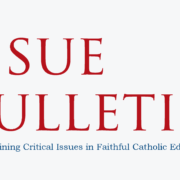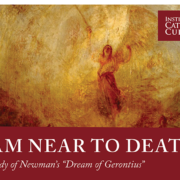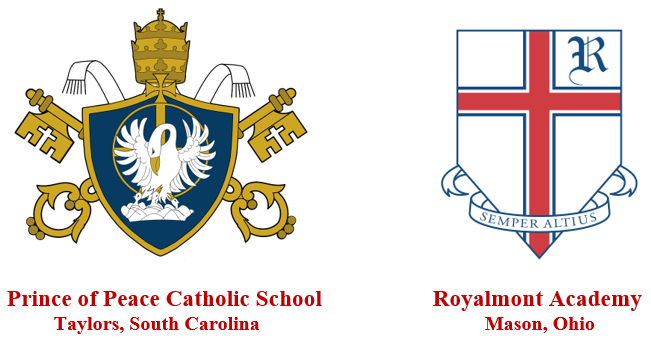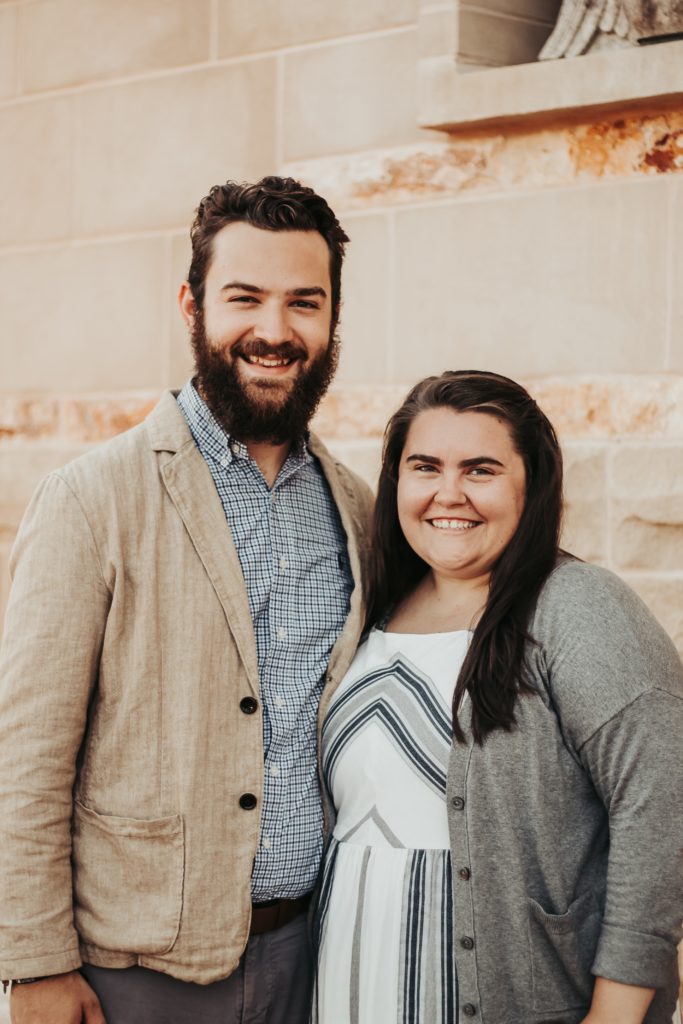With little time to prepare, Catholic schools have had to respond quickly to the COVID-19 pandemic by moving education from traditional brick-and-mortar buildings to students’ homes. Thousands of teachers are now seeking to re-package instruction tailored to distance learning.
A common way for teachers to facilitate at-home education is to copy worksheets and send home textbooks with a list of weekly assignments. This is generally done when a student is ill, but in this new extended learning arrangement worksheets and textbooks alone are not sufficient to convey the richness of the Catholic curriculum which, for most schools, has taken years to develop.
Catholic schools are not only content providers but also evangelical learning communities. It’s important that we come at this situation with our own needs and goals in mind. Facing weeks of missed in-class instruction and the loss of all the critical formation that happens outside of the classroom in a Catholic school, we need to devise more thoughtful and comprehensive strategies to try to compensate for the suspension of in-person instruction.
The first step is to make explicit what we do on a daily basis that makes Catholic education unique and then seek to find ways to translate as much of that magic as possible to a distance learning environment. Vatican documents on education identify several distinctive elements of Catholic education, including:
- the centrality of community and importance of relationships;
- the presence of a rich prayer and sacramental life;
- the integral formation of students’ minds, bodies, and spirits; and
- the development of a Catholic understanding of the world.
This is quite an amazing mission and a huge mandate. It is important to acknowledge up front that it simply cannot be as effectively and powerfully accomplished on-line and at home as it can where we are gathered as a community and interacting with each other personally. Catholicism is all about reality and real physical presence. We are all feeling this now, as we do our best to attend “Online Mass,” which is perhaps the best we can get at the moment—but it pales in comparison to the power of being in each other’s presence as we approach HIS presence in the Eucharist we share. So by all means let’s do what we can, but let’s be transparent that this is a time of separation and shadow, until we can once again be with the students we love and bring the full force of our apostolate to bear.
What follows are few practical tips for conducting our rich mission in a diminished environment. How can Catholic schools continue to provide these key aspects of Catholic education?
The Centrality of Community and Importance of Relationships
So much of who we are in Catholic education is based on our existence as a faith-based community, where we gather together to see, hear, and be with each other in prayer. Participation in the Sacraments, feast-day celebrations, prayer, and rituals form the basis of daily interaction and activities. The regular school day also has other community building activities like class meetings, breaks, games, and just time to hang out with each other. All day long we are building community with each other in school, and it has a cumulative effect of creating and transmitting culture. It is through the community that students receive “a systematic and critical assimilation of culture” which passes along our Catholic traditions, values, and beliefs. In Catholic education, the community itself is considered a formative and educative means of student formation and development, where students learn Christian values by being exposed to Christian values—primarily through the witness of adults and others with whom they interact daily.
How much more important now is the presence of the teacher in these unsettling times, when coming together is difficult and “social distancing” is the norm. Teachers can never be as present in distant learning programs as they are in a real classroom, so it is all the more important to do as much as possible to bridge the gap. It is assumed that teachers will be posting video help for lessons and instruction to the degree possible, but among the community building options available are short videos from the teacher, not just explain a lesson introduction, but speaking from the heart and saying and doing human things to lighten the load and let students know you miss them but are in good humor. Perhaps sending a personal video to a student (copying the parent) on his or her birthday or feast day or recording a dramatic reading of a story or poem for all the children to watch. Take a video of your garden or other image that makes them think of something you all learned or did together.
High-tech options include a livestream class meeting using Teams, Zoom, or some other group conference platform such as podcasts and class chat forums. Make this optional for younger students and give parents at least 24 hours’ notice. Shared social time with you and their classmates may be a welcome break to their home isolation. You can also do a live reading of a story to them for educational purposes without copyright infringement.
Low-tech ways to keep students close might be through a weekly phone call to each of them. Or even write them a letter or card and mail it—they will likely remember it for the rest of their lives. Finally pray for each one of your students daily by name at a particular time and let them know it. This is a time none of us will soon forget! Don’t forget to reach out to parents as well and let them know that you are willing to facilitate help for any particular needs by leveraging school resources.
Older students will enjoy many of the previous contact ideas, but in addition they can be encouraged to sustain community through online “household” social media activities. Both college campuses and high schools have found great success with the household system, which merges various grades or groups together to form smaller sub-communities. This does not have to end with distance learning. There are many opportunities for interaction and joyful competition between groups. These fun competitions direct students’ energy and focus during down time and help maintain peer connections.
The Presence of a Rich Prayer and Sacramental Life
To the degree possible, keep the school’s daily prayer cycles going. If the school day starts with a specific prayer, encourage parents to continue the practice. Remind them that at school, grace and/or the Angelus is said before lunch and to please continue that with the students.
If a class is being live-streamed, then of course it is good to start with a prayer led by the teacher or one student. (Choral prayer or responses do not work well online.)
Not being able to participate together in the Sacraments does not mean that our hearts and minds should be allowed to go on a spiritual vacation. If anything, this is a time to look at what our lives would be like if we didn’t have the Sacraments. Why is attending Mass or going to confession so important? What would my life be like if these activities were permanently eliminated?
If possible, perhaps arrange for an all-school Mass to be video-streamed by the school’s chaplain. This can provide a common experience and keep students and teachers tied to each other in prayer.
Recognizing that students may not engage in prayer at home as frequently as they do in school, make extra efforts to insert prayer and Catholic themes into home assignments.
Provide mothers and fathers, the spiritual heads of the domestic Church, with suggestions for leading the family in morning and evening prayer, the Rosary, the Church’s daily Mass readings, the Liturgy of the Hours, or Lenten Stations of the Cross. Allow time for students to personally reflect on provided prompts or using Lectio Divina to more deeply uncover how God is speaking to the heart can be done by children as well as adults. Following the Church’s liturgical cycle at home as we do in school is also important. Families can now perhaps more purposefully than ever enter into that cycle by introducing new novenas, praying together at certain times of the day, and teaching their children how to do an examination of conscience before they go to bed. Helping families start these family rituals now can have a lasting effect on children’s faith development for years to come. In some cases, families may be relying on us to pray with and form their students and now is an opportunity to fully engage the domestic Church and leverage fuller participation moving forward.
Unlike Catholic school buildings with religious art and classrooms with prayer corners, some homes may have few religious items and no sacred spaces set aside to contemplate God’s word. Since the pandemic has prevented many people from entering the sacred space of our churches, now would be a good time to suggest to families to set aside sacred spaces in the home where children can go throughout the day to quiet their hearts and minds and thank God for His gifts, express sorrow for their failings, or ask for His assistance. A simple crucifix, a picture of Jesus or the Holy Family, a Rosary, or prayer cards can initiate a contemplative, prayerful space.
The Integral Formation of Students’ Minds, Bodies, and Spirits
Distance education lends itself to content delivery and detached academic skills, but in the process may not fully provide for the integral intellectual, physical, and spiritual needs of students. Special effort is needed to maintain this essential aspect of Catholic education.
To avoid the disaggregation of knowledge, which can arise when assignments are provided strictly by subject area, the use of broad essential questions can help tie discrete subjects together. In the classroom, quite often it is the teacher who helps make these connections, so it is important to continue integration through learning at home.
Using problem- and project-based learning approaches may also help facilitate interdisciplinary learning. When using these approaches, develop and provide grading rubrics to students when assignments are given, and suggest online resources and directions where to find them.
As for spiritual development, the above section on prayer already touched on some ways to ensure that we are educating students’ hearts and souls, but special effort toward this end should also be made whenever possible in various subject areas. Specifically tying subject-area materials to lessons on virtue or the faith can help make connections between course subjects such as history or English. Identifying virtues and essential questions will help parents enter into the teaching, exemplifying concepts through discussion and example.
Helping older students reach a deeper level of academic and moral formation through contemplation of rich and complex artistic and philosophical material may benefit from the use of Socratic seminars or guided discussions. These can be done in synchronous or asynchronous online options. In the synchronous option, the teacher and students meet online at a designated time (always allow enough time and patience to ensure the workings of technology) and discuss a text using traditional Socratic etiquette. If synchronous is not an option, teachers can set-up discussion prompts and require each student to make an original response to an online prompt and then two additional responses to comments made by other classmates. This asynchronous option requires an original response to a discussion prompt which ends with a required question, such as “Is this what you think?” or “Have I found all the pertinent aspects?” This is done to generate discussion, further conversation, and facilitate the gathering of different viewpoints and aspects of the topic under consideration.
While “engagement” is the buzz word in the classroom, it is even more important in a distance learning arrangement. Opportunities for interaction among teacher and students and students among themselves will help keep students motivated. Research indicates that high interaction and instructor support through online courses lead to greater course success.
According to one research report, distance instructors who are effective have good:
- course planning and organizational skills specific to distance environments;
- verbal and nonverbal presentation skills specific to distance learning situations;
- ability to involve and coordinate student activities among several sites;
- communication and classroom organizational skills;
- collaborative work with others to produce effective courses; and
- ability to use questioning strategies.
Integral formation also provides for the health and training of students’ bodies. Even though students cannot gather together to play sports, teachers can encourage time spent each day in some form of physical exercise. Some may be able to gather with peers (while practicing social distancing) and go for a walk or bike ride with a friend. Additionally, bodily activities are not limited to athletics but also involve physical activities such as arts, crafts, and music.
Be aware of the physical toll of extensive screen time. While live-stream instruction is a very useful and effective way to build community and keep more intimate and direct contact with students, there are some real limitations. Platforms like Microsoft Teams or Zoom are quite good in replicating a type of classroom environment in real time, but extended use throughout the day can be very hard on teachers and students. Eye strain and headaches are a common side effect as well as just plain burnout if trying to keep it up all day. If going this route, consider designing lots of screen breaks throughout each class and throughout the school day. Students should be asked to look at the screen primarily when class discussions are taking place. Whenever possible, break up discussion with individual work that students can do with pencil and paper or reading from a physical text. Teacher teams may want to quantify, coordinate, and ration screen time as a “corporal work of mercy” to our poor students! And again, get the students moving constantly throughout the day, including in class when possible.
To the extent possible, give the kids and families (and yourself) a break! These are trying times. Do your best to deliver core academic material to the degree possible in the midst of a very real and historic crisis. Then take a deep breath and see how different kids and families respond. To the stressed and overwhelmed, provide comfort and mercy; to the frustrated super-students, develop scads of tailored supplemental material so they can keep flying. Just remember, this too shall pass, and (except for high school seniors) we will have time to get everything back on track later. The whole world is on pause, and we should proceed as best we can, knowing that folks remember how they were treated in a crisis.
Remember to provide accommodations to those students who qualify for them. During this time, students who require accommodations may be the most needy. Fortunately, most accommodations already require the use of individualized online programs and if not already in use, look into the accessibility of them, or ask someone to do that for you. Perhaps this would be a great way to use an hourly employee who might be otherwise laid off.
The Development of a Catholic Understanding of the World
Understandably teachers will rely heavily on material produced by secular educators to get through the first stages of distance education. Publisher-designed worksheets and websites are a logical first place to turn. However, in many cases such resources are insufficient, as Catholic educators teach more. The Congregation for Catholic Education reminds us that Catholic education does not just teach secular subjects like other schools but also imparts a Christian vision of the world, of life, of culture, and of history, ordering the whole of human culture to the news of salvation.
The Cardinal Newman Society’s Catholic Curriculum Standards provide a framework for keeping your curriculum “Catholic”. They purposefully ensure that a Catholic interpretive framework is present and articulated in various academic disciplines.
Additionally, many Catholic publishers already offer textbooks and additional resources online. Some links are provided below.
Finally, a Catholic school can never go wrong with a good supply of literature to recommend. Have students constantly reading a good book. Not everything needs to be formally assessed. The Cardinal Newman Society (as well as other reputable Catholic organizations) have recommended reading lists for different ages. Whenever possible try to get a hard-copy book in front of them, especially as screen time has increased for many students right now. If a home library is thin, then there are plenty of free online books through Kindle, Spark and others.
A pleasurable alternative is to play an audio book suitable to the age range in the household and have students draw, build a puzzle, or work with Legos or clay while they listen—which they often will happily do for an hour or more under the right conditions.
A recent study reported that students do learn differently when comparing online reading to reading from an actual text. Students annotate and highlight more in hard texts (even though both means have this capability), but reading comprehension actually improves with highlighting texts online.
For Catholic educators, this trying experience can serve as a time to recall what Catholic schools do both differently and do well: we are good at community, prayer, integral formation, and creating a Catholic worldview. We now get to try this in greater partnership with our parents to get through this crisis. Once this is all over, we can come together to re-dedicate ourselves to the value of our classrooms, relationships, and awesome calling.
Resources
Webinar to Accompany this Document: https://vimeo.com/403718817/4265ea3c8f
Religious
Mass Online: http://kofc.org/en/news-room/articles/watch-mass-online.html
Catholic Online School: Daily Online Mass Readings with Deacon Keith Fournier.
FORMED: Lenten Reflections, religious movies, devotions, cartoons, and more: https://watch.formed.org/browse
Holy Heroes Sunday Mass preparation for kids: https://www.holyheroes.com/MassPrep-s/57.htm
Stations of the Cross with Fr. Robert Barron (for high school students and adults): Stations.wordonfire.org
Academic
The Catholic Curriculum Standards, from the Cardinal Newman Society: https://cardinalnewmansociety.org/catholic-curriculum-standards/for-educators/
Called to Be More! Free 5-week trial. Based on St. John Paul IIs Theology of the Body, this program is fully online and accessible for teachers and students in grades PreK-5 and 9-12. The high school program was designed to conform with the Bishops Curriculum Framework for high school students and can be accessed here: https://app.ruahwoodspress.com/register/account. The K-5 program: https://ruahwoodspress.kartra.com/page/OCw1
Virtual Book Fairs for Catholic Schools: Leisure reading for Catholic children. Provides a rebate back to the school when you include your school’s code: https://goodnewsbookshop.com/
Kolbe Academy Online: Free literature lesson plans: https://kolbe.org/free-literature/
Standards for Online Course Preparation: https://www.nsqol.org/wp-content/uploads/2019/09/National-Standards-for-Quality-Online-Courses-Catalog3-2019.09.01.pdf
Institute for Catholic Liberal Education School@Home Resources: https://catholicliberaleducation.org/schoolhome/
Arts of Liberty project developed by Master of Classical Education program to support online learning. Links to lessons, study guides, and textbooks on Logic, Rhetoric, Arithmetic, Geometry, Music, Astronomy, Theology, Philosophy, Politics, History, Literature, and Natural Sciences: https://artsofliberty.udallas.edu/
Institute for Excellence in Writing is offering a free, completely digital, three-week program of English language arts instruction that covers writing, grammar, vocabulary, and poetry memorization for grades 3-12. https://iew.com/three-weeks-of-language-arts-instruction-from-iew









